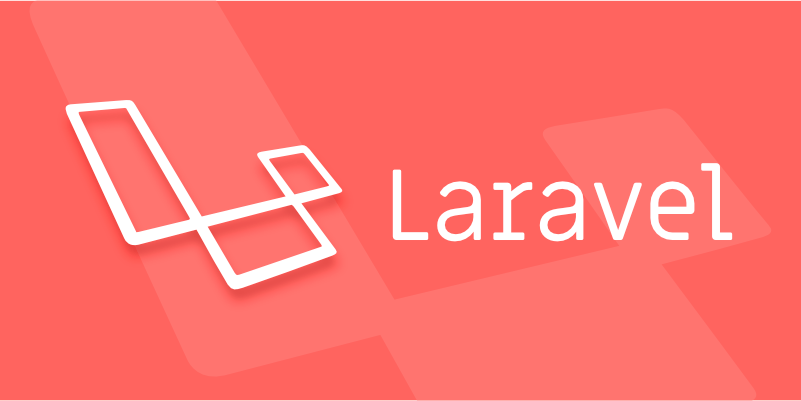To implement two-factor authentication in Laravel, use Laravel Fortify with the pragmarx/google2fa-laravel package. 1. Install Laravel Fortify and run migrations. 2. Install the Google2FA package via Composer. 3. Add two_factor_enabled and two_factor_secret columns to the users table via migration. 4. Use the TwoFactorAuthenticatable trait in the User model. 5. Create a controller to generate and verify TOTP codes for 2FA setup. 6. Create a two-factor challenge view for code input during login. 7. Optionally generate and store encrypted recovery codes. Fortify automatically handles 2FA verification if enabled, redirecting users to the challenge screen upon login. This approach ensures secure, app-based 2FA using tools like Google Authenticator and Authy, providing a robust security layer for your Laravel application.

Implementing two-factor authentication (2FA) in Laravel can greatly improve the security of your application. While Laravel doesn’t include 2FA out of the box, it’s easy to add using packages or custom logic. Here's a practical guide on how to do it effectively.

1. Use Laravel Fortify or Laravel Breeze with a 2FA Package
The easiest and most secure way is to use Laravel Fortify (a backend authentication scaffolding) along with Google2FA or Spatie’s Laravel 2FA package.
Step 1: Install Laravel Fortify (if not already installed)
composer require laravel/fortify php artisan vendor:publish --provider="Laravel\Fortify\FortifyServiceProvider"
Then run migrations:

php artisan migrate
Install Fortify with basic features:
php artisan fortify:install
Note: If you're using Laravel Breeze or Jetstream, you may already have authentication scaffolding.
2. Install Google2FA Package
We'll use pragmarx/google2fa-laravel for TOTP (Time-Based One-Time Password) generation.
composer require pragmarx/google2fa-laravel
Add the service provider (only for Laravel < 5.5 or if package discovery is disabled):
// config/app.php
'providers' => [
// ...
PragmaRX\Google2FALaravel\ServiceProvider::class,
],Publish the config (optional):
php artisan vendor:publish --provider="PragmaRX\Google2FALaravel\ServiceProvider"
3. Update Your User Model
Add a few fields to store 2FA data:
php artisan make:migration add_two_factor_columns_to_users_table --table=users
In the migration:
public function up()
{
Schema::table('users', function (Blueprint $table) {
$table->boolean('two_factor_enabled')->default(false);
$table->string('two_factor_secret')->nullable();
});
}Run the migration:
php artisan migrate
Now, update your User model:
// app/Models/User.php
use Illuminate\Foundation\Auth\User as Authenticatable;
use Laravel\Fortify\TwoFactorAuthenticatable;
class User extends Authenticatable
{
use TwoFactorAuthenticatable;
protected $fillable = [
'name',
'email',
'password',
'two_factor_enabled',
'two_factor_secret',
];
protected $appends = ['two_factor_enabled'];
}Note: The
TwoFactorAuthenticatabletrait (from Fortify) adds 2FA helpers. If you're not using Fortify, you’ll need to implement logic manually.
4. Enable 2FA for a User
Create a controller to handle 2FA setup:
// app/Http/Controllers/TwoFactorController.php
namespace App\Http\Controllers;
use App\Models\User;
use Illuminate\Http\Request;
use PragmaRX\Google2FALaravel\Facade as Google2FA;
class TwoFactorController extends Controller
{
public function show()
{
$user = auth()->user();
$google2fa = Google2FA::generateSecretKey();
$user->two_factor_secret = $google2fa;
$user->save();
$QRImage = Google2FA::getQRCodeInline(
config('app.name'),
$user->email,
$google2fa
);
return view('auth.two-factor-setup', compact('QRImage', 'google2fa'));
}
public function enable(Request $request)
{
$request->validate(['one_time_password' => 'required']);
$secret = $request->user()->two_factor_secret;
$valid = Google2FA::verifyKey($secret, $request->one_time_password);
if ($valid) {
$request->user()->update(['two_factor_enabled' => true]);
return redirect()->route('dashboard')->with('status', '2FA enabled!');
}
return back()->withErrors(['one_time_password' => 'Invalid code.']);
}
public function disable(Request $request)
{
$request->user()->update([
'two_factor_enabled' => false,
'two_factor_secret' => null,
]);
return redirect()->route('dashboard')->with('status', '2FA disabled.');
}
}5. Update Login to Require 2FA
Laravel Fortify automatically handles 2FA if the user has it enabled and the TwoFactorAuthenticatable trait is used.
Ensure in app/Providers/FortifyServiceProvider.php:
use Laravel\Fortify\Fortify;
Fortify::loginView(fn () => view('auth.login'));When a user logs in:
- If 2FA is enabled, Fortify redirects to
/two-factor-challenge. - You need to create this view.
Create the challenge view:
{{-- resources/views/auth/two-factor-challenge.blade.php --}}
<form method="POST" action="{{ route('two-factor.login') }}">
@csrf
<label>Authentication Code</label>
<input type="text" name="code" autofocus>
<button type="submit">Verify</button>
</form>
{{-- Or backup code --}}
<form method="POST" action="{{ route('two-factor.login') }}">
@csrf
<input type="hidden" name="recovery_code" value="1">
<button type="submit">Use Recovery Code</button>
</form>6. Generate Recovery Codes (Optional but Recommended)
You should generate and store encrypted recovery codes for users in case they lose access.
Example:
// In your setup method $recoveryCodes = collect(range(1, 8))->map(fn () => Str::random(10))->toArray(); $user->update(['two_factor_recovery_codes' => $recoveryCodes]); // stored as JSON
You’ll need to add a
two_factor_recovery_codestext or JSON column in the users table.
7. Protect Routes or Views
You can check if 2FA is enabled:
if (auth()->user()->two_factor_enabled) {
// Require 2FA
}Or use middleware if needed.
Summary
To implement 2FA in Laravel:
- ? Use Laravel Fortify or Jetstream for solid foundation
- ? Install pragmarx/google2fa-laravel
- ? Add
two_factor_enabledandtwo_factor_secretto users table - ? Use
TwoFactorAuthenticatabletrait - ? Create routes and views for setup and challenge
- ? Handle verification using TOTP
- ? Optionally support recovery codes
This setup supports authenticator apps like Google Authenticator, Authy, etc.
Basically, it’s secure, widely used, and not overly complex once you follow the steps.
The above is the detailed content of How to implement two-factor authentication in Laravel?. For more information, please follow other related articles on the PHP Chinese website!

Hot AI Tools

Undress AI Tool
Undress images for free

Undresser.AI Undress
AI-powered app for creating realistic nude photos

AI Clothes Remover
Online AI tool for removing clothes from photos.

Clothoff.io
AI clothes remover

Video Face Swap
Swap faces in any video effortlessly with our completely free AI face swap tool!

Hot Article

Hot Tools

Notepad++7.3.1
Easy-to-use and free code editor

SublimeText3 Chinese version
Chinese version, very easy to use

Zend Studio 13.0.1
Powerful PHP integrated development environment

Dreamweaver CS6
Visual web development tools

SublimeText3 Mac version
God-level code editing software (SublimeText3)
 Working with pivot tables in Laravel Many-to-Many relationships
Jul 07, 2025 am 01:06 AM
Working with pivot tables in Laravel Many-to-Many relationships
Jul 07, 2025 am 01:06 AM
ToworkeffectivelywithpivottablesinLaravel,firstaccesspivotdatausingwithPivot()orwithTimestamps(),thenupdateentrieswithupdateExistingPivot(),managerelationshipsviadetach()andsync(),andusecustompivotmodelswhenneeded.1.UsewithPivot()toincludespecificcol
 Sending different types of notifications with Laravel
Jul 06, 2025 am 12:52 AM
Sending different types of notifications with Laravel
Jul 06, 2025 am 12:52 AM
Laravelprovidesacleanandflexiblewaytosendnotificationsviamultiplechannelslikeemail,SMS,in-appalerts,andpushnotifications.Youdefinenotificationchannelsinthevia()methodofanotificationclass,andimplementspecificmethodsliketoMail(),toDatabase(),ortoVonage
 Understanding Dependency Injection in Laravel?
Jul 05, 2025 am 02:01 AM
Understanding Dependency Injection in Laravel?
Jul 05, 2025 am 02:01 AM
Dependency injection automatically handles class dependencies through service containers in Laravel without manual new objects. Its core is constructor injection and method injection, such as automatically passing in the Request instance in the controller. Laravel parses dependencies through type prompts and recursively creates the required objects. The binding interface and implementation can be used by the service provider to use the bind method, or singleton to bind a singleton. When using it, you need to ensure type prompts, avoid constructor complications, use context bindings with caution, and understand automatic parsing rules. Mastering these can improve code flexibility and maintenance.
 Strategies for optimizing Laravel application performance
Jul 09, 2025 am 03:00 AM
Strategies for optimizing Laravel application performance
Jul 09, 2025 am 03:00 AM
Laravel performance optimization can improve application efficiency through four core directions. 1. Use the cache mechanism to reduce duplicate queries, store infrequently changing data through Cache::remember() and other methods to reduce database access frequency; 2. Optimize database from the model to query statements, avoid N 1 queries, specifying field queries, adding indexes, paging processing and reading and writing separation, and reduce bottlenecks; 3. Use time-consuming operations such as email sending and file exporting to queue asynchronous processing, use Supervisor to manage workers and set up retry mechanisms; 4. Use middleware and service providers reasonably to avoid complex logic and unnecessary initialization code, and delay loading of services to improve startup efficiency.
 Managing database state for testing in Laravel
Jul 13, 2025 am 03:08 AM
Managing database state for testing in Laravel
Jul 13, 2025 am 03:08 AM
Methods to manage database state in Laravel tests include using RefreshDatabase, selective seeding of data, careful use of transactions, and manual cleaning if necessary. 1. Use RefreshDatabasetrait to automatically migrate the database structure to ensure that each test is based on a clean database; 2. Use specific seeds to fill the necessary data and generate dynamic data in combination with the model factory; 3. Use DatabaseTransactionstrait to roll back the test changes, but pay attention to its limitations; 4. Manually truncate the table or reseed the database when it cannot be automatically cleaned. These methods are flexibly selected according to the type of test and environment to ensure the reliability and efficiency of the test.
 Choosing between Laravel Sanctum and Passport for API authentication
Jul 14, 2025 am 02:35 AM
Choosing between Laravel Sanctum and Passport for API authentication
Jul 14, 2025 am 02:35 AM
LaravelSanctum is suitable for simple, lightweight API certifications such as SPA or mobile applications, while Passport is suitable for scenarios where full OAuth2 functionality is required. 1. Sanctum provides token-based authentication, suitable for first-party clients; 2. Passport supports complex processes such as authorization codes and client credentials, suitable for third-party developers to access; 3. Sanctum installation and configuration are simpler and maintenance costs are low; 4. Passport functions are comprehensive but configuration is complex, suitable for platforms that require fine permission control. When selecting, you should determine whether the OAuth2 feature is required based on the project requirements.
 Implementing Database Transactions in Laravel?
Jul 08, 2025 am 01:02 AM
Implementing Database Transactions in Laravel?
Jul 08, 2025 am 01:02 AM
Laravel simplifies database transaction processing with built-in support. 1. Use the DB::transaction() method to automatically commit or rollback operations to ensure data integrity; 2. Support nested transactions and implement them through savepoints, but it is usually recommended to use a single transaction wrapper to avoid complexity; 3. Provide manual control methods such as beginTransaction(), commit() and rollBack(), suitable for scenarios that require more flexible processing; 4. Best practices include keeping transactions short, only using them when necessary, testing failures, and recording rollback information. Rationally choosing transaction management methods can help improve application reliability and performance.
 Handling HTTP Requests and Responses in Laravel.
Jul 16, 2025 am 03:21 AM
Handling HTTP Requests and Responses in Laravel.
Jul 16, 2025 am 03:21 AM
The core of handling HTTP requests and responses in Laravel is to master the acquisition of request data, response return and file upload. 1. When receiving request data, you can inject the Request instance through type prompts and use input() or magic methods to obtain fields, and combine validate() or form request classes for verification; 2. Return response supports strings, views, JSON, responses with status codes and headers and redirect operations; 3. When processing file uploads, you need to use the file() method and store() to store files. Before uploading, you should verify the file type and size, and the storage path can be saved to the database.







